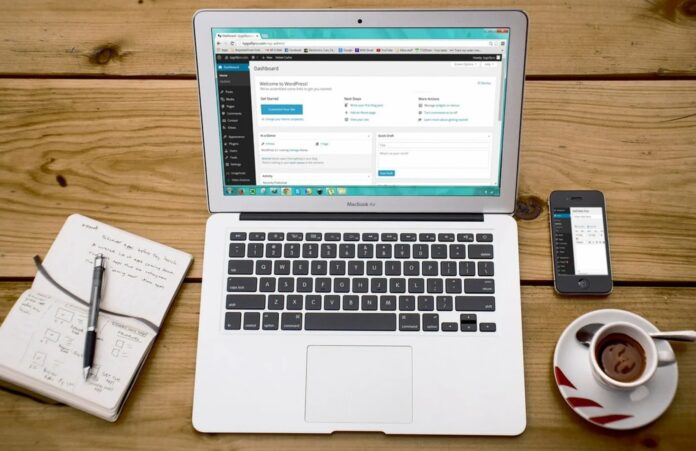Credibility matters when building a successful business. The way customers perceive your company can affect your revenues and profits, which is why it’s important to establish strong brand credibility to gauge success. Having a business website is a statement of legitimacy and it instills confidence. It’s not unusual now for people to open their browsers and check out a company before they contract them or make a purchase. 2021 is the best time for website development. Even if things continually evolve, the fundamentals are still constant. The Internet will remain the most critical tool and medium for marketing modern businesses.
This might sound obvious, but your business objections shouldn’t be based on the trends. While it’s important to keep up-to-date with current web design trends, your long-term vision and objectives provide a great basis for consideration. That being said, here are the 5 things to consider when building a business website.
1. Determine you want the website to achieve

The online platform enables visitors to see you in the virtual space. Rather than making assumptions, they can see what your brand stands for. Therefore, don’t delay your decision for setting up a site. Establish what you want your website to achieve. Don’t skip to the interesting part and start brainstorming ideas for advanced features. The website design should rely on specific goals and measurable objectives. What do you want from the site? A website is more than a set of pretty pictures; it’s an integral part of your brand and what you share with the world online.
Having an attractive site isn’t enough to increase brand awareness and customer reach. If you have a realistic set of goals and objectives, you’ll considerably increase your chances of online success. Make sure that your website:
- Looks professional
- Is secure
- Has a recognizable domain name
- Makes contact info easy to find
- Highlight your unique selling proposition
- Provides fresh content
Spend as much time as necessary for planning your website.
2. Identify your primary users

In developing your online platform, take into account the primary users. A website that’s aimed at everyone won’t attract anyone. Build a site that meets the needs, wants, and desires of the target audience. To do that, you’ve got to discover who these people are. To understand who your ideal visitor is and what they care about, find out where they hang online and offline and how they like to communicate, identify their demographic information, and, last but not least, determine what problems your digital product solves. It’s not uncommon to discover that you have several primary users.
The point is that you don’t want to design for everyone. There needs to be something that ties the users together. Create a digital product that’s aligned with your business strategy and delivers a better user experience. Not only should the site appeal to ideal visitors but also convince them it’s necessary to take the next step – to buy. For instance, if you’re struggling to sell technical products, it doesn’t make sense to include animations or artsy slideshows on the website.
3. Focus on mobile friendliness

According to the experts at Pixetic, Google has been focusing more and more on mobile search when determining search rankings. Starting next year, mobile-first indexing will be enabled by default for all new websites. It goes without saying that you have to design your site to be mobile-friendly to make sure that your top pages, especially your homepage, perform well. In 2024, no business should be investing in a website that isn’t built for mobile. It’s estimated that the number of mobile users worldwide will rise to 7,1 billion. The likelihood is that visitors will access your site from a cell phone or tablet.
The most important mobile-friendly features that your website should have are responsive website design, clear CTAs, simple mobile navigation, usable forms, and click-to-call functionality. If your online platform has these all-important features, you get closer to achieving your business goals. At present, mobile is the main platform for Internet activities, whether searches or online purchases. It’s the place where information moves freely and social interactions take place. Make sure your company’s web presence is designed for mobile devices first and desktop second. After all, we’re living in the age of mobile marketing.
4. Decide whether to outsource web development

You can choose to build the business website in-house or outsource the work. There are many advantages to hiring an outside party to design the site. Examples include but aren’t limited to cost savings, working with experts in their field, and showing up faster on the market with a groundbreaking digital product. There’s no need to worry when outsourcing your web development project because you’ll get a non-disclosure agreement signed. The web design agency won’t share sensitive information. Hire an attorney and have them draft the agreement.
Communication is key when it comes to outsourcing web development. Different work schedules and varying availability makes it difficult to control the core elements. Get in touch as often as you can and be honest. This entails communicating all information available, including the bad news. Withholding bad news will only release you from an unpleasant task for the time being. Don’t hesitate to speak your mind. Most importantly, start by outsourcing small tasks. This way, you can verify the capabilities of the company and, if you like the result, you can continue the collaboration.
5. Understand your commitment

It takes a tremendous amount of time and energy to build a business website. The question now is: Are you up for the task? Figure out if you’re willing to make a commitment. Align your resources, speak with your internal team, and ask for help if you can’t do it alone. If you’re deeply invested in your company, then you’ll commit to this very important decision. The website will enable you to communicate your brand culture and show just how important your company is in the vast sea of lookalikes. Just as you go above and beyond for customer satisfaction and happiness, make your business stand out.









